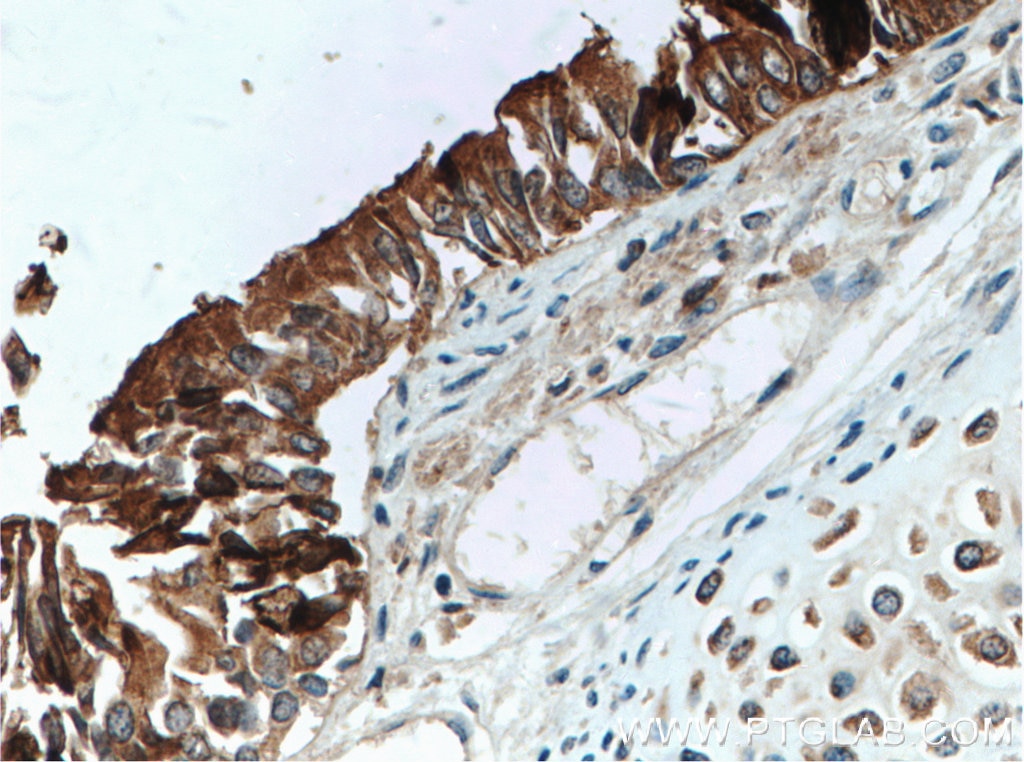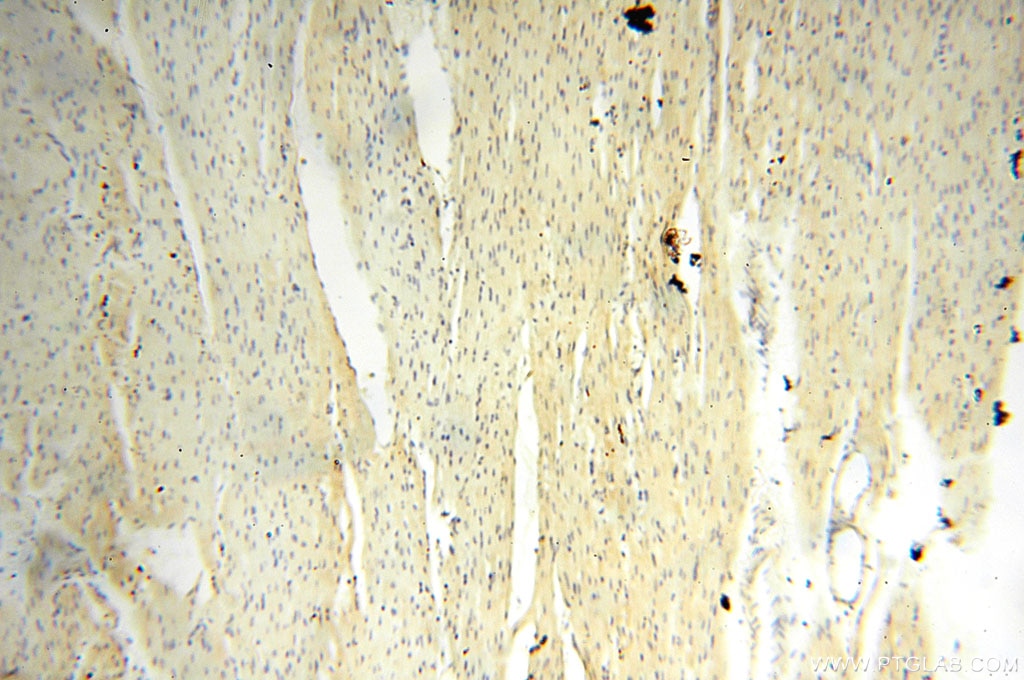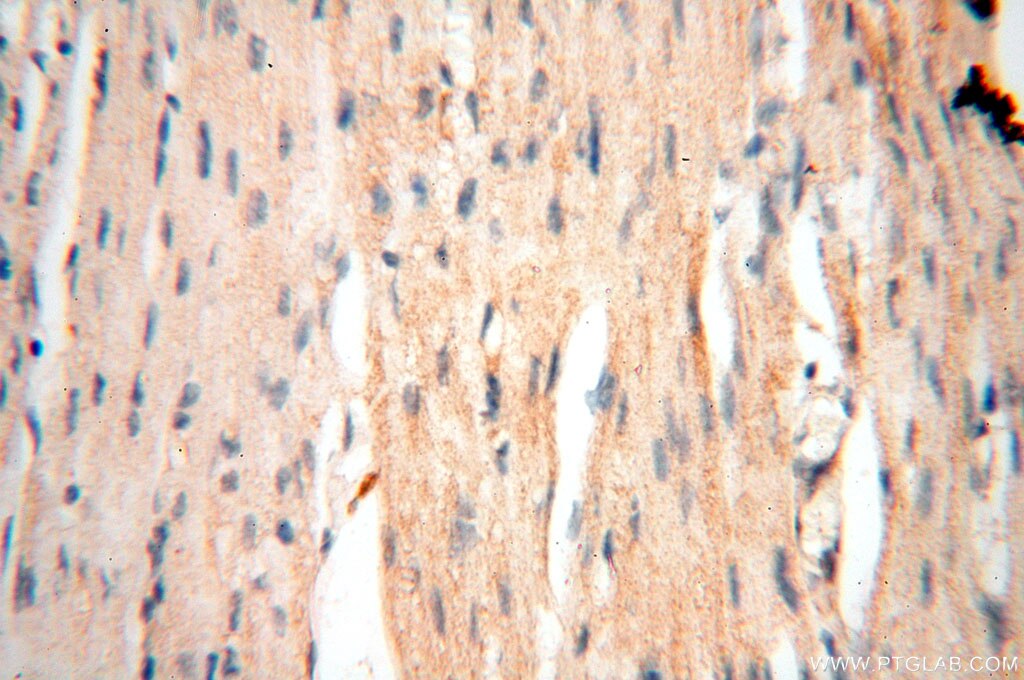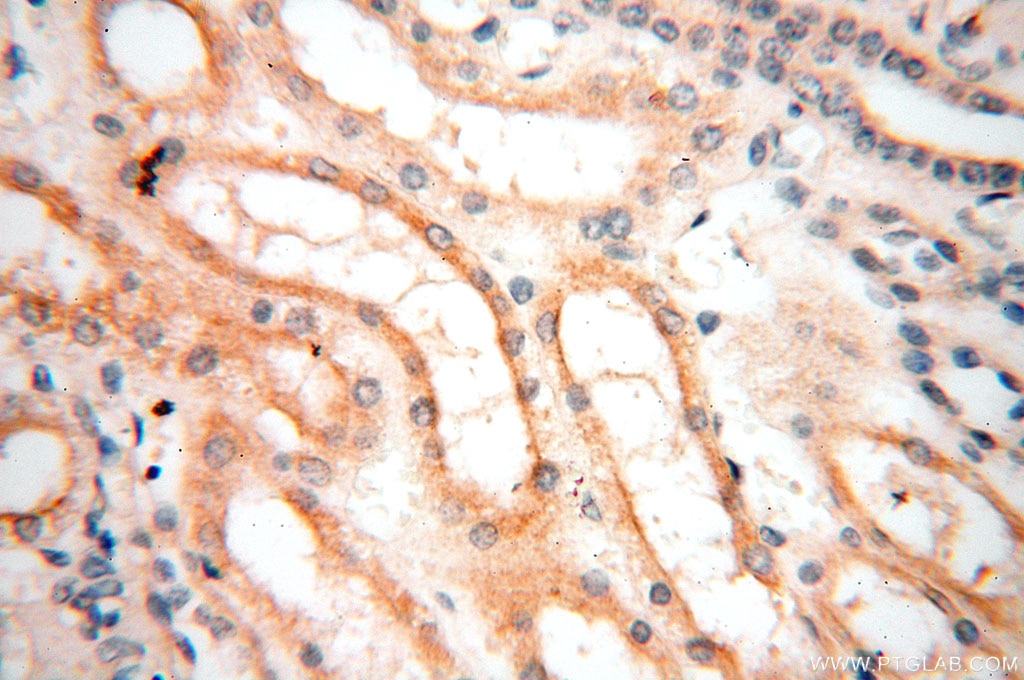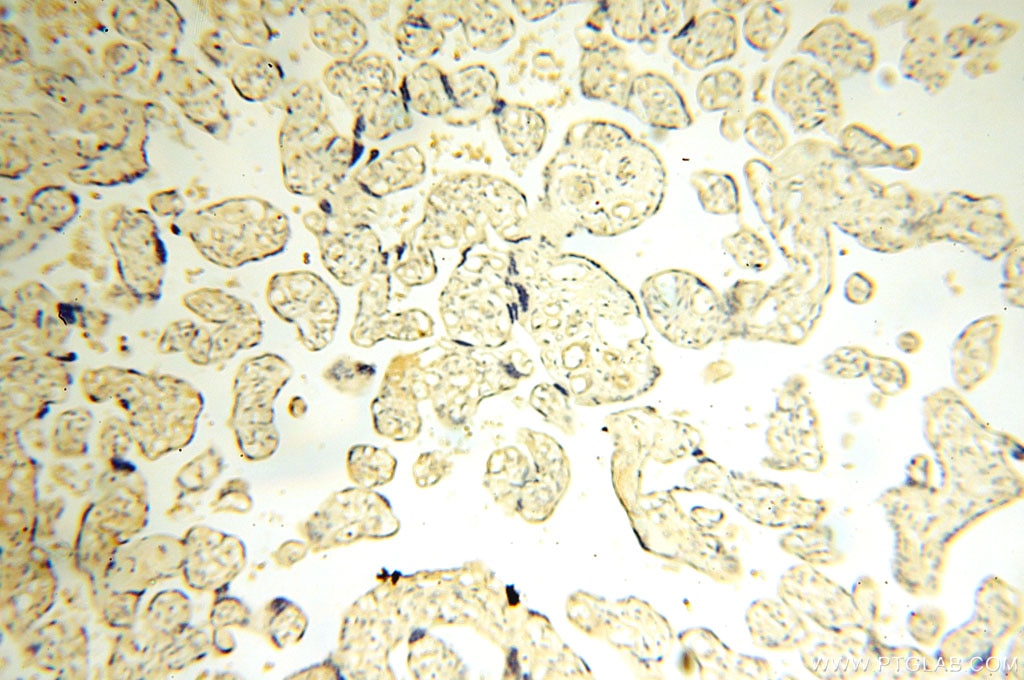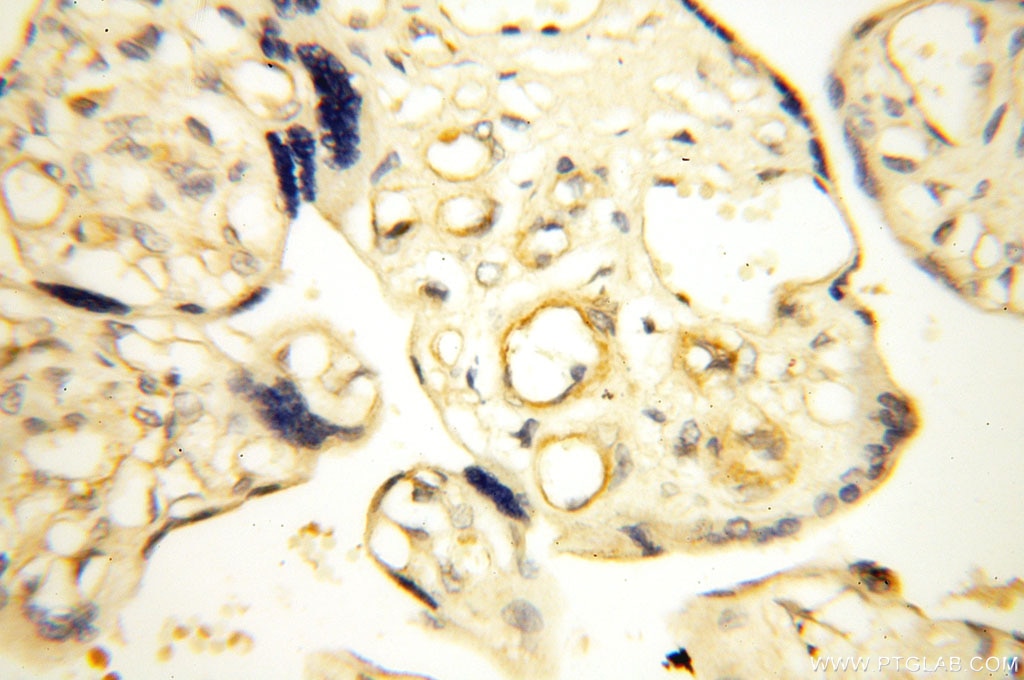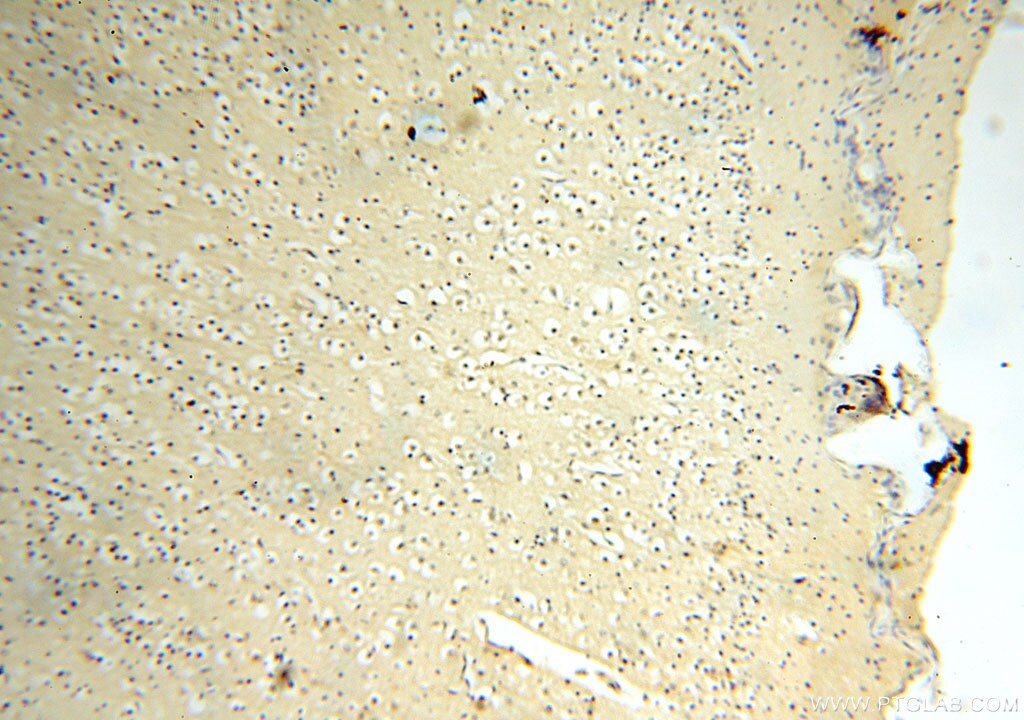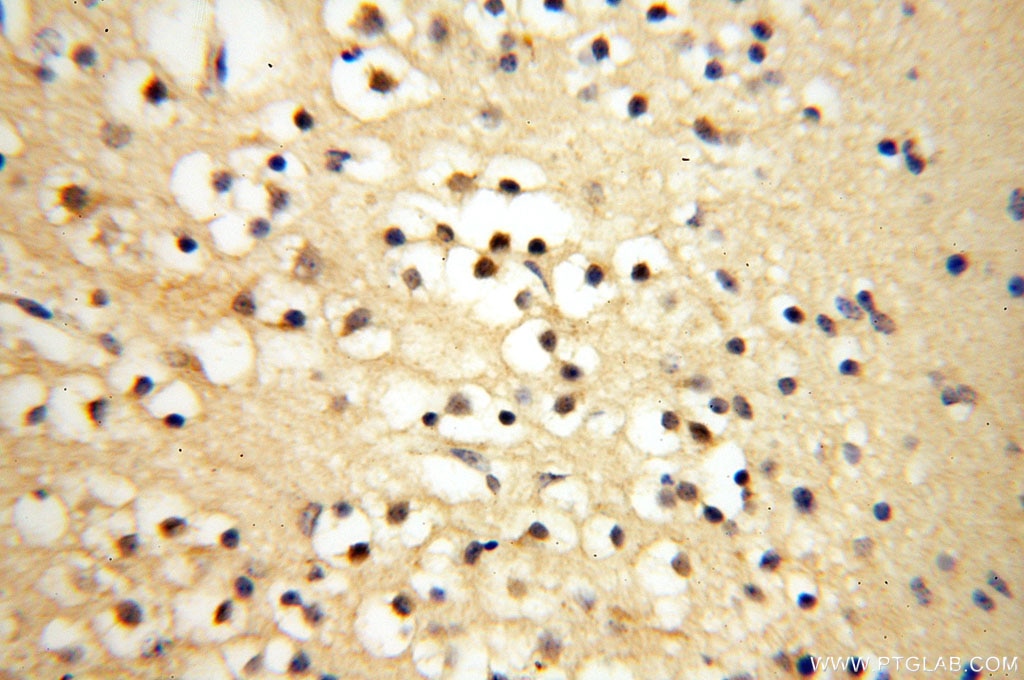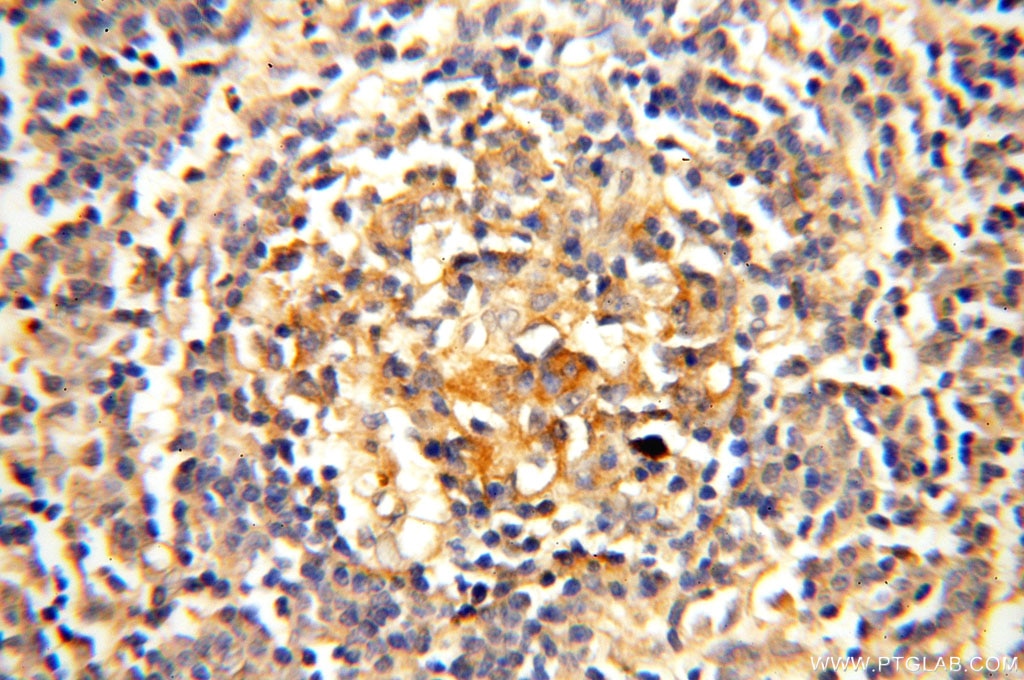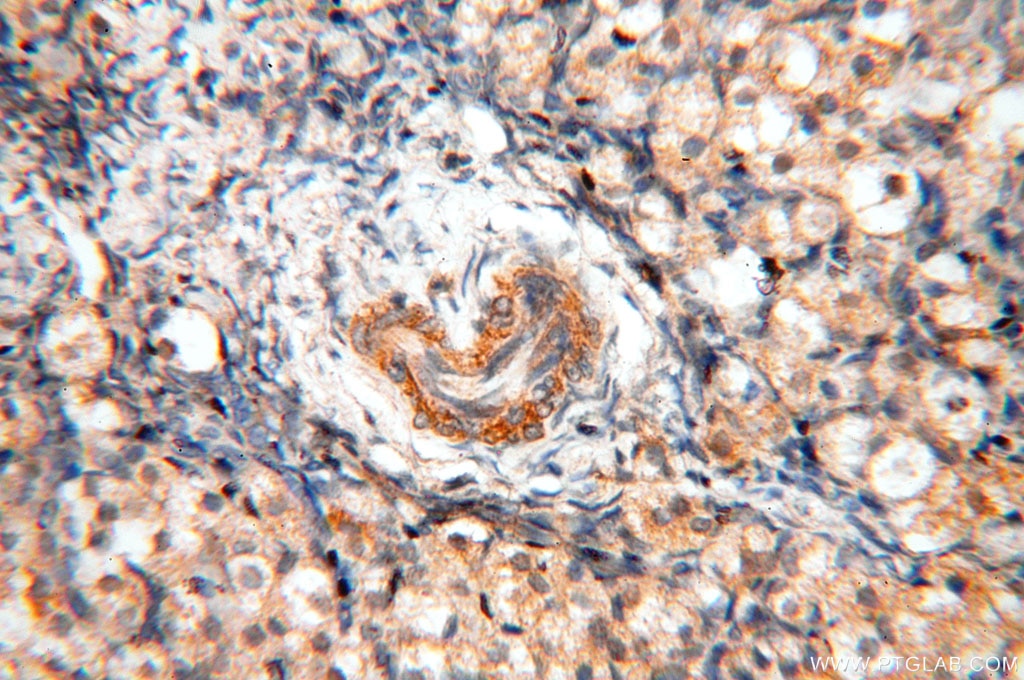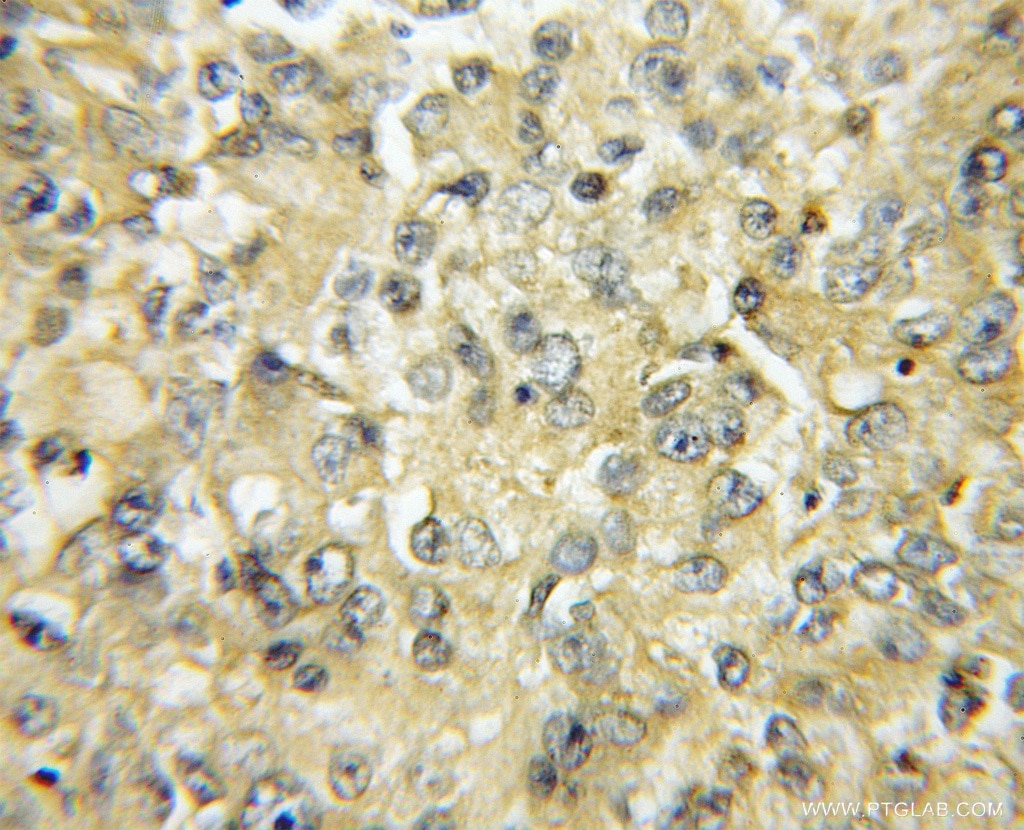Surfactant Protein A Polyklonaler Antikörper
Surfactant Protein A Polyklonal Antikörper für IHC, ELISA
Wirt / Isotyp
Kaninchen / IgG
Getestete Reaktivität
human und mehr (2)
Anwendung
WB, IHC, ELISA
Konjugation
Unkonjugiert
Kat-Nr. : 11850-1-AP
Synonyme
Geprüfte Anwendungen
| Erfolgreiche Detektion in IHC | humanes Lungengewebe, humanes Hirngewebe, humanes Herzgewebe, humanes Nierengewebe, humanes Lungenkarzinomgewebe, humanes Eierstockgewebe, humanes Plazenta-Gewebe, humanes Hautgewebe, humanes Milzgewebe Hinweis: Antigendemaskierung mit TE-Puffer pH 9,0 empfohlen. (*) Wahlweise kann die Antigendemaskierung auch mit Citratpuffer pH 6,0 erfolgen. |
Empfohlene Verdünnung
| Anwendung | Verdünnung |
|---|---|
| Immunhistochemie (IHC) | IHC : 1:200-1:1000 |
| It is recommended that this reagent should be titrated in each testing system to obtain optimal results. | |
| Sample-dependent, check data in validation data gallery | |
Veröffentlichte Anwendungen
| WB | See 5 publications below |
| IHC | See 1 publications below |
Produktinformation
11850-1-AP bindet in WB, IHC, ELISA Surfactant Protein A und zeigt Reaktivität mit human
| Getestete Reaktivität | human |
| In Publikationen genannte Reaktivität | human, Hausschwein, Maus |
| Wirt / Isotyp | Kaninchen / IgG |
| Klonalität | Polyklonal |
| Typ | Antikörper |
| Immunogen | Surfactant Protein A fusion protein Ag2417 |
| Vollständiger Name | surfactant protein A1 |
| Berechnetes Molekulargewicht | 248 aa, 26 kDa |
| GenBank-Zugangsnummer | BC026229 |
| Gene symbol | Surfactant Protein A |
| Gene ID (NCBI) | 653509 |
| Konjugation | Unkonjugiert |
| Form | Liquid |
| Reinigungsmethode | Antigen-Affinitätsreinigung |
| Lagerungspuffer | PBS with 0.02% sodium azide and 50% glycerol |
| Lagerungsbedingungen | Bei -20°C lagern. Nach dem Versand ein Jahr lang stabil Aliquotieren ist bei -20oC Lagerung nicht notwendig. 20ul Größen enthalten 0,1% BSA. |
Hintergrundinformationen
Surfactant protein A (SP-A), is the major protein component of pulmonary surfactant involved in surfactant-related function or structure and in the regulation of inflammatory processes and innate host defens. In humans and primates, SP-A1 (SFTPA1) and SP-A2 (SFTPA2) genes encode SP-A, and these two SP-A genes have high homology (PMID: 34484180, PMID: 19392648). This antibody can recognize both SP-A1 (SFTPA1) and SP-A2 (SFTPA2).
Protokolle
| PRODUKTSPEZIFISCHE PROTOKOLLE | |
|---|---|
| IHC protocol for Surfactant Protein A antibody 11850-1-AP | Protokoll herunterladenl |
| FC protocol for Surfactant Protein A antibody 11850-1-AP | Download protocol |
| STANDARD-PROTOKOLLE | |
|---|---|
| Klicken Sie hier, um unsere Standardprotokolle anzuzeigen |
Publikationen
| Species | Application | Title |
|---|---|---|
Sci Total Environ Protein lysine acetylation played an important role in NH3-induced AEC2 damage and pulmonary fibrosis in piglets | ||
Int J Mol Sci Kub3 Deficiency Causes Aberrant Late Embryonic Lung Development in Mice by the FGF Signaling Pathway. | ||
Cancer Immunol Immunother SFTPA1 is a potential prognostic biomarker correlated with immune cell infiltration and response to immunotherapy in lung adenocarcinoma. | ||
Biochem Biophys Res Commun Increased mortality from influenza infection in long-chain acyl-CoA dehydrogenase knockout mice. | ||
Environ Toxicol Silica nanoparticle exposure inhibits surfactant protein A and B in A549 cells through ROS-mediated JNK/c-Jun signaling pathway. | ||
J Thorac Dis Deletion of LCMR1 in alveolar type II cells induces lethal impairment of lung structure and function in adult mice |



